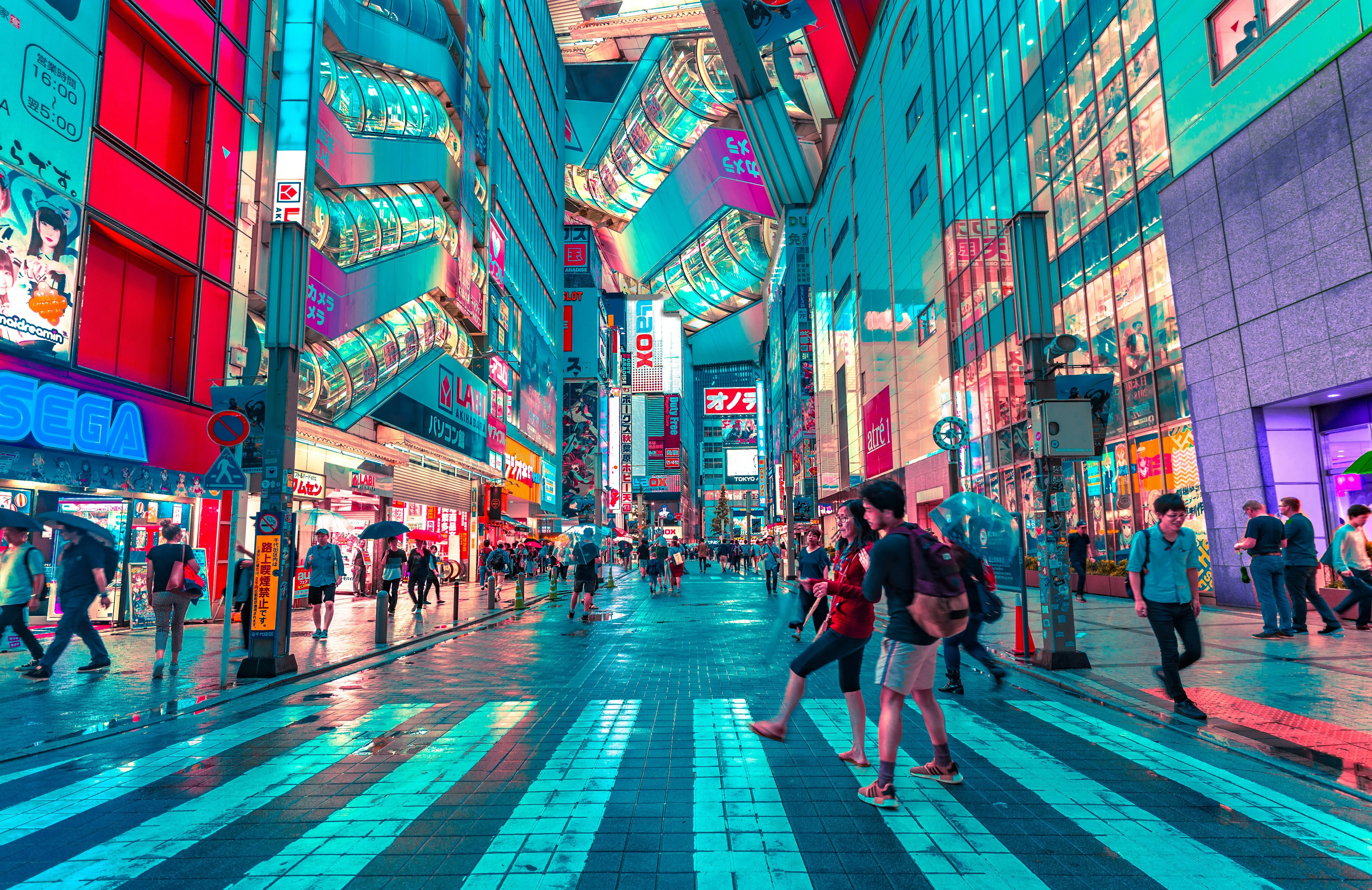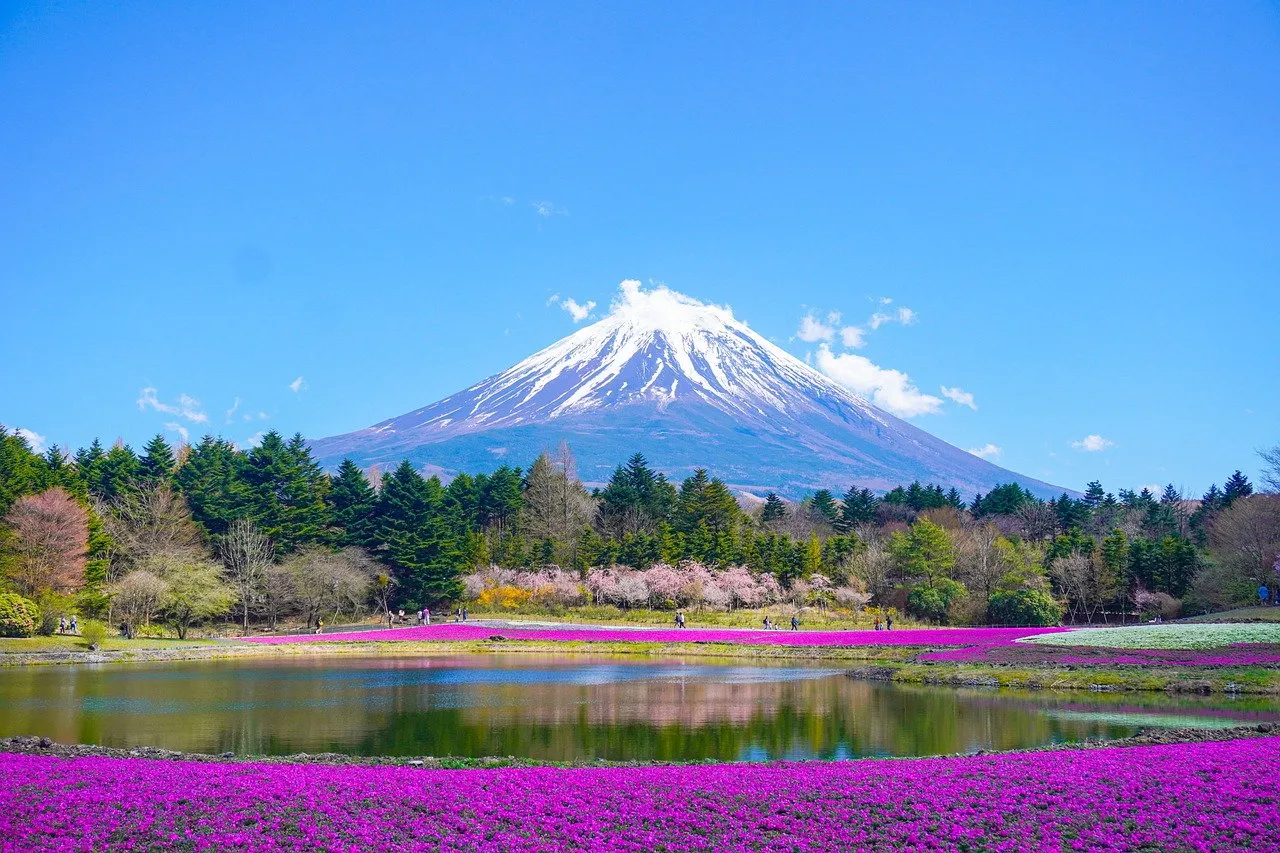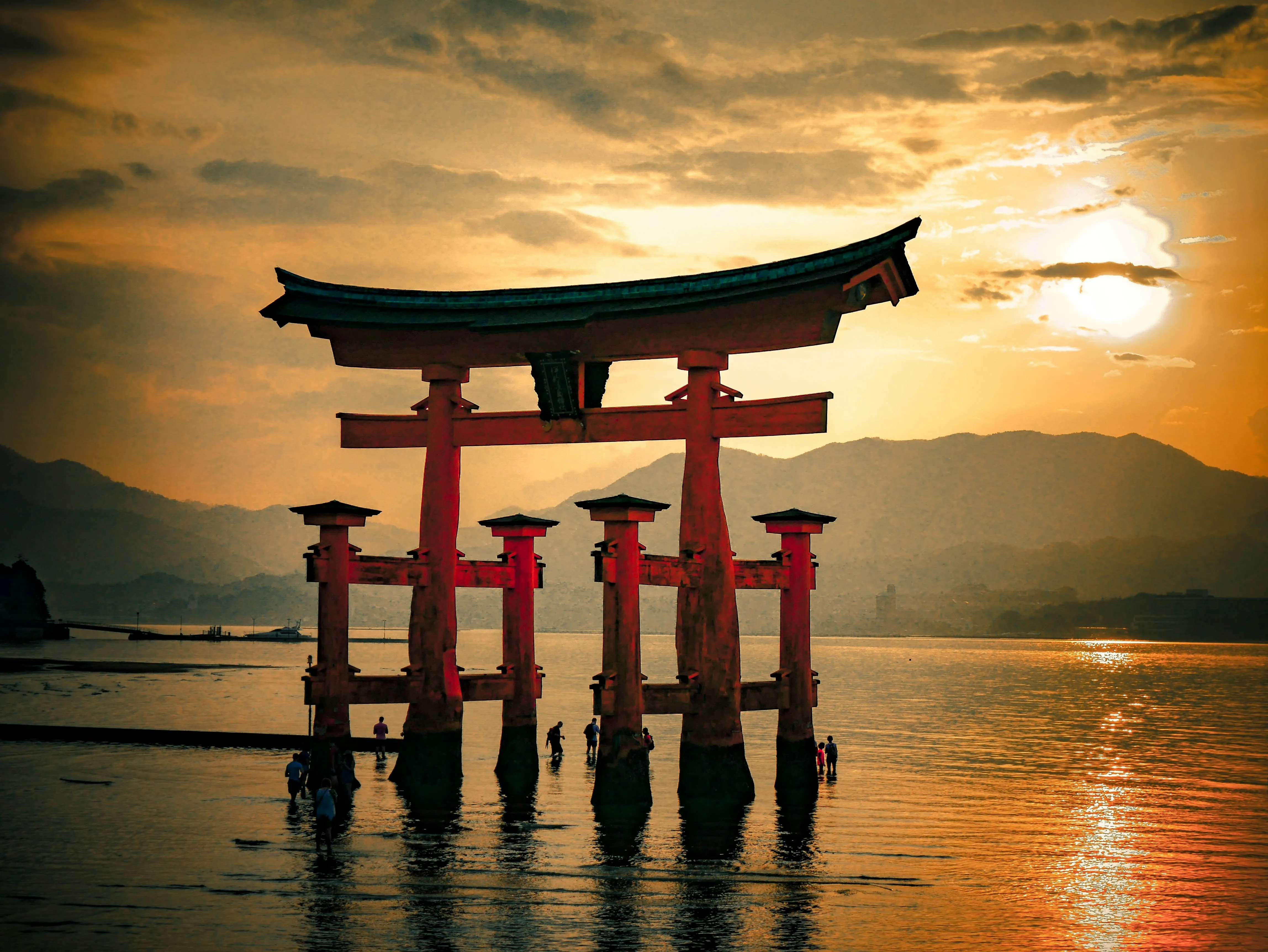714 - Easter Cruise Japan 2026
Asia, 3/30/2026 – 4/12/2026

714 - Easter Cruise Japan 2026
Asia , March 30, 2026 - April 12, 2026
Your cruise route
3. - 4. day
Arrival to Tokyo, transfer to hotel, accommodation and overnight stay (transfer and accommodation included in tour price).
After breakfast, a full-day tour of Tokyo with a local Czech-speaking guide (included in the tour price).A visit to the symbol of the city, the famous Tokyo Tower, combined with a visit to a nearby Buddhist shrine with the opportunity to buy scented sticks (climb the tower on your own). Stop at a traditional fish market with lunch. Imperial Palace and Ginza, the most expensive district in Japan. In the evening, Shibuya district with the statue of Hachiko the dog and a view of the legendary crossroads.
Third day in Tokyo breakfast, transfer to the port, loading and late lunch. Ship tour with delegate, safety drill, dinner and personal free time.
Tokyo's history is a fascinating story of transformation and resilience. Originally a small fishing village known as Edo, it became the seat of the Tokugawa Shogunate in the 17th century, beginning its journey to greatness. Under the rule of the shoguns, Edo developed into one of the world's greatest cities, filled with samurai, merchants and artists. This period, known as the Edo era, left the city with a rich cultural heritage that can still be admired today in historic districts such as Asakusa or in traditional gardens hidden among the skyscrapers.
In 1868, with the onset of the Meiji period and the transfer of the imperial seat from Kyoto, Edo was renamed Tokyo - "Eastern Capital". This era began the rapid modernization and westernization of Japan, of which Tokyo became the center. Despite the devastating earthquake of 1923 and the bombings of World War II, the city has always managed to rebuild itself, stronger than ever. This indomitability is evident in every aspect of modern Tokyo, which has become a symbol of Japanese innovation and progress without losing touch with its rich past. A walk through the streets of Tokyo is thus a time travel, where every corner tells the story of a city that is unafraid of change, yet honoring its roots.
Tokyo area: recommended to visit
Mount Fuji
Fuji-Hakone-Izu National Park is a natural wonder that will take your breath away. The park is dominated by the majestic Mount Fuji, a sacred symbol of Japan whose perfect curves have inspired artists for centuries. In the Hakone area, you will discover the magical world of hot springs, where you can relax and recharge at the traditional onsen baths. A cruise on Lake Ashi will offer you breathtaking views of Mt. Fuji, while trails lead through dense forests beckoning you to explore. Whether you're looking for a spiritual experience, an active vacation or just an escape into nature, this park offers an unforgettable experience for every visitor.
Kamakura Historical Town
Kamakura, the former capital of medieval Japan, will enchant you with its rich history and peaceful atmosphere. Just an hour away from bustling Tokyo, you'll find yourself in a world of majestic temples, quiet gardens and imposing statues. Gaze at the iconic bronze statue of the Great Buddha, stroll through the bamboo grove at Hōkoku-ji Temple and enjoy the fresh sea air on the beaches lining the coast. Kamakura is the perfect place for those who want to experience the magic of traditional Japan.
5. day at sea
6. day
Hiroshima, a city in the southwest of Japan, captivates with its history, culture and natural beauty. The biggest attractions are the Hiroshima Peace Memorial (Atomic Bomb Dome) and the Peace Park with its museum commemorating the events of 1945. Nature lovers should not miss Mijajima Island with the famous Floating Gate Torii of the Itsukushima Shrine. In addition, you can enjoy a local specialty, the traditional okonomiyaki pancake. Visit Hiroshima and experience its unique spirit!
Included in the price of the tour is a day trip to Hiroshima with a local Czech-speaking guide.
The Port of Hiroshima, also known as Hiroshima Harbor, is located in the southwestern part of the Hiroshima city in Japan. The port has a significant history, originally established in 1884 during the Meiji period when Japan was rapidly industrializing and modernizing.
During World War II, the Port of Hiroshima served as a crucial military base for the Imperial Japanese Navy. However, it was severely damaged by the atomic bombing in 1945. After the war, the port was rebuilt and has since grown to become one of the most important ports in the Seto Inland Sea area.
7. day
Kagoshima in southern Japan is known for its fascinating nature and volcanic landscape. The biggest attraction is the active Sakurajima volcano, which majestically dominates the local skyline. The city also offers the tranquil gardens of Sengan-en, with views of the volcano and a rich history of the samurai era. Lovers of traditional cuisine will appreciate the local specialty kurobuta - tender meat from black pigs. Kagoshima combines natural beauty, history and unique flavours.
The port of Kagoshima, located in the southwestern corner of Kyushu, has a rich history that dates back to the 7th century. Known as the "Naples of the Eastern world" due to its bay location and scenic backdrop of an active volcano, Kagoshima was a significant naval base during the Sengoku period under the Shimazu clan. It was also a major center for Western learning and modernization during the Meiji period.
In 1549, the port was visited by Francis Xavier, a Roman Catholic missionary, marking the start of Christianity in Japan. Kagoshima's international influence grew when it opened as a foreign trade port in 1859. This allowed goods such as Satsuma ware (a type of pottery), Satsuma oranges, and shochu (a type of distilled alcohol) to be exported. In the late 19th century, it played a crucial role in the Meiji Restoration, a period of rapid modernization and westernization in Japan.
8. day
Jeju, South Korea's largest island, is known for its volcanic landscape and rich culture. The island is dominated by Halasan volcano, South Korea's highest mountain, surrounded by a beautiful national park. The town of Gangjeong, where we anchor, offers a unique insight into the life of local fishermen and traditional culture. The island is also famous for fame tunnels, such as Manjanggul, and breathtaking waterfalls, such as Cheonjeyeon. Food lovers will appreciate the local specialities, such as fresh seafood and dishes made from mandarin oranges, which are the island's symbol. Jeju combines natural beauty, cultural richness and culinary experiences.
The history of the port Gangjeong in the Republic of Korea is deeply rooted in the country's maritime tradition. It is located on the southern coast of Jeju Island and has been a prominent harbor for hundreds of years. The port has been an important hub for the fishing industry and has contributed greatly to the local economy.
In recent years, the port Gangjeong has been the subject of controversy due to the construction of a naval base. Initiated in 2007, the project was met with protests from local residents and environmentalists. Despite the opposition, the Gangjeong naval base was completed in 2016, significantly changing the character and function of the historic port.
9. day
Sasebo, a port city in southwestern Japan, attracts visitors with its beautiful nature and cultural atmosphere. The main attraction is Kyokushima, an archipelago with dozens of picturesque islands that can be viewed from sightseeing boats. Nearby is the town of Nagasaki, famous for its history and landmarks such as the Monument of Peace. Sasebo also offers a taste of local specialties, such as the famous Sasebo burgers. Combining natural beauty, history and gastronomy, Sasebo is an ideal base for exploring the region.
The port of Sasebo has a rich history, with its origins dating back to 1889 when it was established as a naval port. Its strategic location in the Nagasaki prefecture made it a critical base for the Imperial Japanese Navy during World War II. Post-war, the United States Navy took control of the port and it remains an important part of the U.S. Fleet Activities Sasebo today.
In recent years, Sasebo has been transformed into a commercial and tourist hub. It is known for its beautiful natural features, including the nearby Kujukushima Islands. The port also serves as a gateway to the Saikai National Park. Furthermore, it has become a popular port of call for international cruise ships, fostering global cultural exchanges and contributing to the local economy.
10. day at sea
11. day
Kobe, a modern port city, is known for its international atmosphere and famous Kobe beef. Kobe combines modern city life with the opportunity to explore traditional Japan in nearby Kyoto.
The tour also includes a day trip with a local guide to the nearby historic city of Kyoto, considered the cultural heart of Japan. Kyoto offers iconic sights such as the Golden Kinkakuji Pavilion, the Fushimi Inari Temple with its famous thousand red torii gates, or the tranquil Bamboo Grove in Arashiyama.
The Port of Kobe is a Japanese maritime port in Kobe, Hyogo in the greater Osaka area, surrounded by the Pacific Ocean. It is the second largest trading port in Japan and has a long history dating back to the 8th century, when it was known as Owada Anchorage and primarily served the Imperial Court in Nara.
In the 19th century, the port was one of the first to be opened for foreign trade following Japan's period of isolation. It has since grown into one of the country's major ports, famous for its stunning nighttime skyline. Great Hanshin earthquake in 1995 caused severe damage to the port, but it has since been reconstructed and continues to be an important port for Japan.
12. day at sea
13. day
After disembarkation, a full-day tour of Tokyo with a local guide (included in the tour price) will follow.We will tour Ueno Park, famous for its sakura trees and Japanese people who sit under the blossoming trees for hours and feast. We'll visit the oldest part of Tokyo, the Asakusu district and its Buddhist temple, Sensoji, where there will be an opportunity to shop for souvenirs in the adjacent alleyways. Afterwards, we will transfer to the airport and take a flight home with a transfer.
Tokyo's history is a fascinating story of transformation and resilience. Originally a small fishing village known as Edo, it became the seat of the Tokugawa Shogunate in the 17th century, beginning its journey to greatness. Under the rule of the shoguns, Edo developed into one of the world's greatest cities, filled with samurai, merchants and artists. This period, known as the Edo era, left the city with a rich cultural heritage that can still be admired today in historic districts such as Asakusa or in traditional gardens hidden among the skyscrapers.
In 1868, with the onset of the Meiji period and the transfer of the imperial seat from Kyoto, Edo was renamed Tokyo - "Eastern Capital". This era began the rapid modernization and westernization of Japan, of which Tokyo became the center. Despite the devastating earthquake of 1923 and the bombings of World War II, the city has always managed to rebuild itself, stronger than ever. This indomitability is evident in every aspect of modern Tokyo, which has become a symbol of Japanese innovation and progress without losing touch with its rich past. A walk through the streets of Tokyo is thus a time travel, where every corner tells the story of a city that is unafraid of change, yet honoring its roots.
Tokyo area: recommended to visit
Mount Fuji
Fuji-Hakone-Izu National Park is a natural wonder that will take your breath away. The park is dominated by the majestic Mount Fuji, a sacred symbol of Japan whose perfect curves have inspired artists for centuries. In the Hakone area, you will discover the magical world of hot springs, where you can relax and recharge at the traditional onsen baths. A cruise on Lake Ashi will offer you breathtaking views of Mt. Fuji, while trails lead through dense forests beckoning you to explore. Whether you're looking for a spiritual experience, an active vacation or just an escape into nature, this park offers an unforgettable experience for every visitor.
Kamakura Historical Town
Kamakura, the former capital of medieval Japan, will enchant you with its rich history and peaceful atmosphere. Just an hour away from bustling Tokyo, you'll find yourself in a world of majestic temples, quiet gardens and imposing statues. Gaze at the iconic bronze statue of the Great Buddha, stroll through the bamboo grove at Hōkoku-ji Temple and enjoy the fresh sea air on the beaches lining the coast. Kamakura is the perfect place for those who want to experience the magic of traditional Japan.

Popis zájezdu
Embark on our spring 2026 Japan cruise during the magical sakura blossom season! Aboard the luxury MSC Bellissima, you'll visit Tokyo, Hiroshima, Kogoshima, South Korea's Jeju Island, Sasebo (Nagasaki) and Kobe, from where you'll cruise to scenic Kyoto. The tour includes four excursions with a local Czech-speaking guide: twice Tokyo, Hiroshima and Kyoto.
Explore new places and enjoy the beauty of Japan with Riviera Tour!

Helena Chovancová
A few lines about me. My name is Helena and I have always enjoyed writing or finding new information, so I decided to study journalism. But during my studies I found another love - Korean, which gave me the opportunity to live in beautiful Seoul, South Korea. After my return, I devoted myself mainly to writing about Formula 1, which I still love now, and motorsport is still with me in my spare time. I came back to my native Wallachia, where I joined the Riviera Tour to show the beauty of the world to other people. Maybe one day I will show the beauty of South Korea to you too.
The cruise price includes
- Czech delegate throughout the tour
- Tours with local guide and delegate: Tokyo (2x), Hiroshima, Kobe (Kyoto)
- 2 nights in a hotel in Tokyo with breakfast
- Airline service in Economy class* with a transfer
- Airport taxes and fuel surcharges
- Airport - hotel/port - airport transfers
- Sightseeing cruise in given date and ship MSC
- Accommodation in an inside cabin of the BELLA category
- Full board for the entire stay on the ship
- Port charges, porter service on boarding
- Daily cabin cleaning
- Captain's Gala Evening, Gala Cocktail
- Insurance against bankruptcy of CK
- Animation and entertainment programmes on board
- Theatres, swimming pools, whirlpools, pool service
- Service charge 15€/person/day
The cruise price does not include
- Optional cruise company excursions in destinations
- Drinks, alcoholic beverages in bars and restaurants
- Extra services for an extra charge (saunas, massages, cinema, circus...)
- Cruise company transfers in ports
For an additional fee we offer
- Svozový transfer FM-Ostrava-Olomouc-Brno (a zpět) za příplatek 1.390 Kč
- Special travel and health insurance for cruises at sea
- Better cabin categories Fantastica, Aurea and MSC Yacht Club
- Window cabins, balcony cabins, suites and MSC Yacht Club
- Beverage packages and packets in presale with discount
- Internet packages in presale with discount
Other
- The airline will endeavour to place clients according to cabin accommodation, however Economy Class does not guarantee this service. In case you require seating next to each other, you must choose a higher class at an additional cost. Please note that transportation is provided by scheduled flight. It is therefore not possible to change the name of the person or cancel the flight free of charge;
The organizer of the cruise is: MSC CRUISES S.A., Avenue Eugene Pittard 40, Geneva, Switzerland. Travel agency RIVIERA TOUR and shipping company is authorized to make operational changes to the program and services provided before the trip and during the trip, if it is not possible to maintain the originally agreed program and services. In the case of trips to regions where the current security situation may require a change in the route or cruise, there is no breach of the travel contract if a deviation in the route does not exceed 50% of the originally planned cruise route. The customer acknowledges that each such deviation from the originally planned cruise route is made to maintain his safety and is included in the price of the trip. These provisions also apply to this situation and related services.
With Riviera Tour you get more:
With us, the complete price - you don't pay anything extra, everything is in the Czech language - you will receive from us printed, fully processed departure instructions containing the boarding pass, information about countries, destinations, information about services on the ship, a translated menu*. We have a 24/7 assistance service for solving crisis situations, we will help you in case of unexpected events, communication with doctors, insurance company, we will help you with accommodation, transport, you can solve all complaints through our CK and note that RIVIERA TOUR sells all cruises as a travel agency - guarantee and security for you

A gift for you with your order
With Riviera Tour you get more:
With us, the complete price - you don't pay anything extra, everything is in the Czech language - you will receive from us printed, fully processed departure instructions containing the boarding pass, information about countries, destinations, information about services on the ship, a translated menu*. We have a 24/7 assistance service for solving crisis situations, we will help you in case of unexpected events, communication with doctors, insurance company, we will help you with accommodation, transport, you can solve all complaints through our CK and note that RIVIERA TOUR sells all cruises as a travel agency - guarantee and security for you























































 Mediterranean
Mediterranean
 Mediterranean
Mediterranean
 Mediterranean
Mediterranean
 Mediterranean
Mediterranean